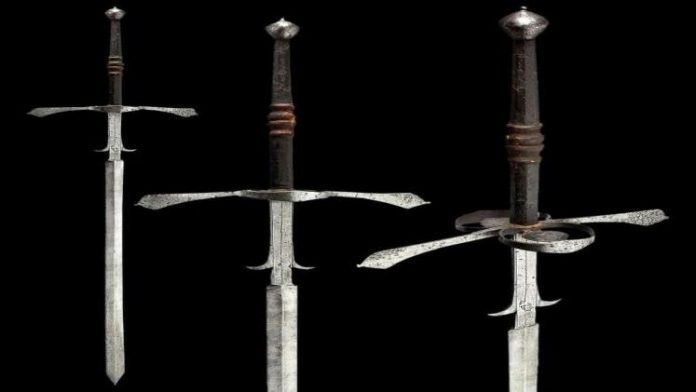Last Updated on February 11, 2022 by rida
The long sword is a common weapon in many of Europe’s early renaissance swords. These swords were popularly used during tournaments and other large-scale battles involving large numbers of people. Although martial arts these swords were not always made to be used effectively as weapons of war, they were a favored weapon of the knights during those times.
In the past, the weapon was typically used as a one-man army due to the weight it required from its wielder. Because of this, it was designed for strength rather than agility or flexibility. In contrast to their two-handed sword counterparts, the early renaissance swordsman would use his weapon in one stroke, making it easy to perform. The earliest known cross-section drawing weapon was created during the middle ages in Europe. A knight would carry one on his belt, between his arms, or as he marched.
During the period of the Renaissance, the arming and fighting skills of several kings changed the design of the English long sword. The long sword became more of a single-edged sword that had a cross-section. Instead of having two parallel blades, the weapon had only one cross-section. This meant that the weapon could handle more weight, which in turn gave the knights more power when fighting. It was designed to be quick and to deal massive damage in a short amount of time.
This weapon was also important in tournaments and combats due to its exceptional strength and skill in weapon manship. The popularity of the longswords led to the development and modification of fencing methods and weapons, which led to the evolution of fencing as we know it today. There are three common types of fencing that can be used in a tournament: English, Scottish, and Italian. The longbow and Welsh cudgel were later added to this group.
The longbow is a medieval weapon that was commonly used by Scottish highland fighters. It was primarily a defensive weapon, though the long swordsmen also made use of the weapon in many cases. Many knights even had a longbow with them during battle, though the majority of them carried a short sword. This weapon was made out of clay or bronze, which was highly resistant to corrosion and hard enough to use in close-quarters combat. The longswords were used primarily for cutting and parrying during close-range combat, although they were capable of inflicting great amounts of damage from a distance.
The most popular weapon used by a typical medieval knightly sword is the long sword, which was known as the first true mace. It was mostly used in close hand-to-hand combat, though it could also be used in a few cases to kill large numbers of opponents at a time. Most of the popular stories about medieval knights and battles involve them using such weapons. There are a few exceptions to this rule, such as the famous battle between Hector Parmenides, where the two swordsmen traded back-and-forth like lovers.
In modern times, the two-handed sword, which was called the rapier, remains a popular weapon, especially among European fencing masters. However, many people are beginning to recognize the value of the long sword, which dates back to ancient times. One of the main reasons why the two-handed sword has become more popular is the increase in its availability. Today, it is easy to find a long sword for sale, while many longswords have been passed down only a few generations. There are a number of different types of European martial arts weapons, including a long sword (called a scimitar), battleax, halberd, pike sword, axe, knife, cudgel, mace, Warhammer, stick, and nunchuck. Some of these weapons are not necessarily appropriate weapons for fighting, and some others, when used as weapons of opportunity, can cause unnecessary injury.
Because of the popularity of the long sword, many variations of this type of weapon are available today, including a popular weapon known as a ninja sword. Another type of weapon that is commonly used in European martial arts is the katana or samurai sword. A longer version of the long sword usually has a double-edged blade. Most katana blades are around two to three feet long, but katana swords that are over one thousand years old are still very sharp. Regardless of the type of weapon that you choose, remember that using a weapon for the self-defense needs to be done with care, as any type of blade can cause injury if you are not careful. If you seek best Long sword consult with Battling Blades for more information.



























